Construction of a prognostic 6-gene signature for breast cancer based on multi-omics and single-cell data
- PMID: 38074669
- PMCID: PMC10698552
- DOI: 10.3389/fonc.2023.1186858
Construction of a prognostic 6-gene signature for breast cancer based on multi-omics and single-cell data
Abstract
Background: Breast cancer (BC) is one of the females' most common malignant tumors there are large individual differences in its prognosis. We intended to uncover novel useful genetic biomarkers and a risk signature for BC to aid determining clinical strategies.
Methods: A combined significance (p combined) was calculated for each gene by Fisher's method based on the RNA-seq, CNV, and DNA methylation data from TCGA-BRCA. Genes with a p combined< 0.01 were subjected to univariate cox and Lasso regression, whereby an RS signature was established. The predicted performance of the RS signature would be assessed in GSE7390 and GSE20685, and emphatically analyzed in triple-negative breast cancer (TNBC) patients, while the expression of immune checkpoints and drug sensitivity were also examined. GSE176078, a single-cell dataset, was used to validate the differences in cellular composition in tumors between TNBC patients with different RS.
Results: The RS signature consisted of C15orf52, C1orf228, CEL, FUZ, PAK6, and SIRPG showed good performance. It could distinguish the prognosis of patients well, even stratified by disease stages or subtypes and also showed a stronger predictive ability than traditional clinical indicators. The down-regulated expressions of many immune checkpoints, while the decreased sensitivity of many antitumor drugs was observed in TNBC patients with higher RS. The overall cells and lymphocytes composition differed between patients with different RS, which could facilitate a more personalized treatment.
Conclusion: The six genes RS signature established based on multi-omics data exhibited well performance in predicting the prognosis of BC patients, regardless of disease stages or subtypes. Contributing to a more personalized treatment, our signature might benefit the outcome of BC patients.
Keywords: biomarker; breast cancer; multi-omics; prognosis; risk score; triple-negative breast cancer.
Copyright © 2023 Xing, Lin, Hong, Ma, Jiang, Lu, Sun, Song, Xie, Yang, Xie, Wang, Zhou, Chen, Wang and Gao.
Conflict of interest statement
YH and ZM were employees by Beijing ChosenMed Clinical Laboratory. The remaining authors declare that the research was conducted in the absence of any commercial or financial relationships that could be construed as a potential conflict of interest.
Figures

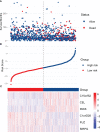
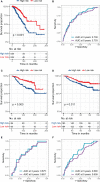

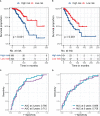
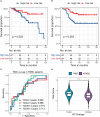

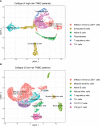

References
LinkOut - more resources
Full Text Sources

